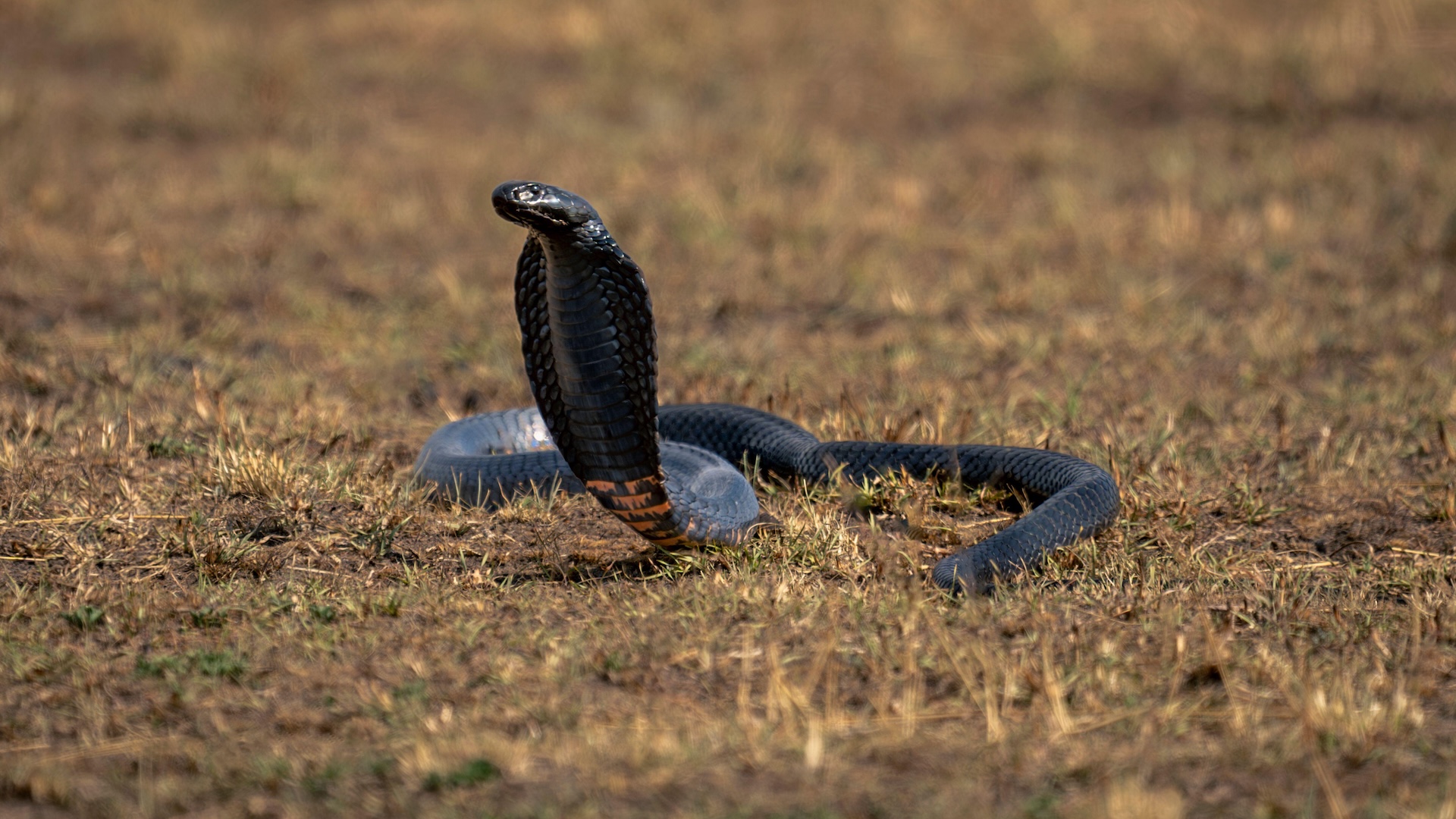New antivenom works against 17 dangerous African snake species, study suggests
Scientists have developed a nanobody-based antivenom that neutralizes toxins from most African cobras, mambas and the rinkhals, which could offer safer, scalable protection beyond existing snakebite treatments.

More than 300,000 snakebite cases occur in Africa annually, resulting in at least 7,000 deaths, as well as numerous amputations and injuries. Now, scientists have invented a new nanobody-based antivenom that shows promise against 17 dangerous African snake species.
Until now, the mainstays of treatment have been antivenoms created by exposing horses to particular venoms and then isolating protective antibodies from the animals' blood. These traditional antivenoms can occasionally cause allergic reactions in patients, and they are effective against only one or a few of related snake species.
Now, in a study published in October in the journal Nature, scientists report creating an antivenom that targets most of Africa's deadliest elapids, meaning cobras, mambas, and the rinkhals, also called ring-necked spitting cobras. Instead of horse serum, the antivenom uses eight engineered nanobodies that are essentially tiny antibody fragments designed to block key toxins in the snakes' venoms.
Juan Calvete, director of the Evolutionary and Translational Venomics Laboratory at the Biomedicine Institute of Valencia, who was not involved in the study, said the new nanobody-based antivenom is "a remarkable advance in the development of synthetic antivenoms." However, he noted that in its current form, the antivenom may be expensive to make, and thus challenging to use in poorer regions.
To create the new antivenom, researchers exposed an alpaca and a llama to venoms from 18 African snakes, including cobras, mambas, and the rinkhals. These snakes' venoms are potent and can cause serious problems, such as paralysis and tissue damage, and they also contain a diverse range of toxins.
The llama and alpaca exposed to the venoms produced special, tiny antibodies, known as nanobodies. The compact size of these nanobodies enables them to diffuse quickly through tissues and bind toxins at hard-to-reach sites in the body, the study authors noted.
The researchers collected the animals' blood and used a technique to find nanobodies that stick well to various venom toxins. The nanobodies that latched on most effectively were then made in the lab and tested for their ability to block the venoms' effects. Finally, eight of these engineered nanobodies were combined into a powerful mix to create the new antivenom.
Get the world’s most fascinating discoveries delivered straight to your inbox.
In lab tests in mice, this nanobody serum prevented death from 17 of the 18 target snake venoms; the venom of the eastern green mamba (Dendroaspis angusticeps) was the only one not fully neutralized. Further analyses suggested that the antivenom neutralized seven toxin families found within the venoms and that it reduced tissue damage from venoms known to kill cells.
The antivenom outperformed a commonly used antivenom designed to target multiple toxins: Mice given the nanobody mix survived multiple venoms with fewer symptoms than did mice treated with the traditional horse-antibody-based serum.
"The main advance of our work is showing that an effective recombinant antivenom can be made with a surprisingly small number of nanobodies that outperform existing ones," senior study author Andreas Hougaard Laustsen-Kiel, a biotechnologist at the Technical University of Denmark, told Live Science in an email. The new antivenom was better at preventing both lethal effects and tissue damage, and it could theoretically be "produced at large scale in bioreactors, independent of snakes and horses," he said.
The next steps include testing the antivenom's effects in larger animals to estimate what dose a human might need and optimize the process to scale up production. "We are also testing some of these nanobodies, and new ones, against Asian cobra venoms to develop cocktails with broader species coverage and geographical relevance," Laustsen-Kiel said.
The idea of a broad-spectrum — or even "universal" — antivenom has recently gained traction. A notable 2025 study published in the journal Cell used human antibodies from a snakebite survivor to protect mice from multiple cobra and mamba venoms. Yet practical and economic barriers remain to developing such an antivenom and manufacturing it affordably and scalably.
Calvete called the new nanobody venom a significant advance, but he cautioned that dosing requirements in humans might complicate things. "A therapeutic dose to treat envenomings from all target snakes could require up to 50 grams of nanobodies," he suggested. (That said, tests to officially determine human dosing have yet to be conducted.)
He added that improving the pharmacokinetics of the antivenom — that is, how the treatment interacts with the human body — would likely increase production costs beyond what was seen in this proof-of-concept study. "The most powerful of all the 'omics' — economics — may once again represent an insurmountable obstacle to fighting the most neglected of tropical diseases," he concluded.
In theory, the new nanobody mixture could represent a promising step toward safer, scalable snakebite therapies, but further testing, manufacturing optimization, and regulatory validation will be crucial to getting it into human patients.
This article is for informational purposes only and is not meant to offer medical advice.

Sayan Tribedi is a freelance science writer based in Kolkata, India. He holds a bachelor's degree in chemistry from the University of Calcutta and a master's in bioinformatics from Pondicherry University. With research experience in protein-protein interactions, he brings a strong scientific foundation to his writing. Sayan enjoys translating complex scientific ideas into accessible, engaging stories for the general public. His work has appeared in The Hindu and Science Reporter, among other publications.
You must confirm your public display name before commenting
Please logout and then login again, you will then be prompted to enter your display name.
